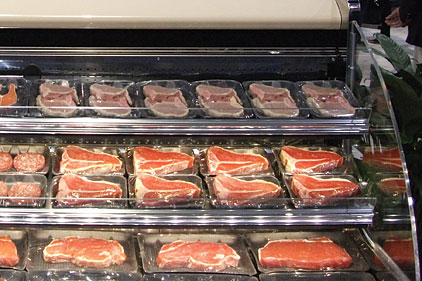Editor’s Note: This material was prepared by National Refrigerants Inc. and originally appeared in its Refrigerant Reference Guide 5th Edition. For more information go to http://www.refrigerants.com.
Ultra-low temperature systems are used to achieve low temperature baths or boxes for laboratory use, storage of pharmaceutical or biological samples, low temperature manufacturing of metals, or extreme temperature environmental testing.
The lowest temperature that can practically be achieved in single-stage refrigeration systems is about -40 to -50˚F. A single-stage system is limited by the compression ratio of the compressor and the ambient temperature in which it must condense the refrigerant. Temperatures from -50 down to -120˚ or lower can only be achieved economically by using cascade refrigeration systems.
In a typical cascade system, a standard refrigeration system is used on the “high side” to create a cold temperature in the cascade condenser. The “low side” system is able to condense at -20 to -30˚ and evaporate as low as -120˚ with the available refrigerants before they go into vacuum. Larger systems tend to have some kind of oil separator and oil management system to keep the oil in the compressor. Some systems also employ an expansion tank to keep the refrigerant from generating extreme pressures at room temperature when the system is off.
Traditional high side refrigerants are CFC-12, HCFC-22, and CFC-502. Alternative high side refrigerants are HFC-134a, HFC-404A, and HFC-507.
Traditional low side refrigerants are CFC-13 and CFC-503. Alternative low side refrigerants are HFC-23 and HFC-508B.
Oil Circulation
Standard refrigeration oils will become very thick at low temperatures and will not flow around the system back to the compressor. If the compressor gets too cold, the oil will gel inside the compressor sump and not provide lubrication. Many systems rely on the refrigerant to soak into the oil and move it around the system. This method of oil circulation works well down to about -100˚ evaporator temperature. In addition, systems with short run times will allow the oil to return to the compressor when the evaporator warms.
Systems that run for longer times at colder temperatures, or involve complicated piping, will need to use an oil separator after the low stage compressor(s).
In addition, hydrocarbon refrigerants are typically added to the system so they can soak into the oil and keep it fluid at very low temperatures. The amount of hydrocarbon used is typically between 5 and 10 percent by weight. Among the HCs that can be used (all of which are supplied by National Refrigerants) are -170 (ethane), -1150 (ethylene), -600 (butane), -600a (isobutene), -290 (propane), and pentane liquid.
Moisture
Removal of moisture is more important in cascade systems than it is at higher temperature ranges. Refrigerants such as R-22 and R-404A can absorb and carry much more water than the 10 ppm specification and the 30 to 50 ppm indication level of a sight glass. In contrast, R-13 is estimated to only hold about 0.1 ppm of water at -80˚.
Excess moisture will definitely separate from the refrigerant and clog capillary tubes or cause other problems. Maintenance of driers is very important in the low stage of a cascade system.
Expansion Volume
Refrigerants in the low stage must maintain normal operating pressures in the compressor at very low temperatures. These refrigerants will condense around -30 to -20˚ at pressures from 110 to 160 psig. When these refrigerants warm up to room temperature, the saturation pressure or, in some cases, the critical pressure, can exceed 700 psig.
Rather than going to the expense of building systems to withstand these pressures, an expansion tank or other system volume is provided. The charge expands into the extra volume, allowing all liquid to boil completely to vapor. Simple gas laws dictate how much volume is needed to keep the charge at a gas pressure of usually no more than 250 psig. Consequently, systems are often charged simply by bringing the empty system up to some static pressure.
Publication date: 01/09/2012


Report Abusive Comment